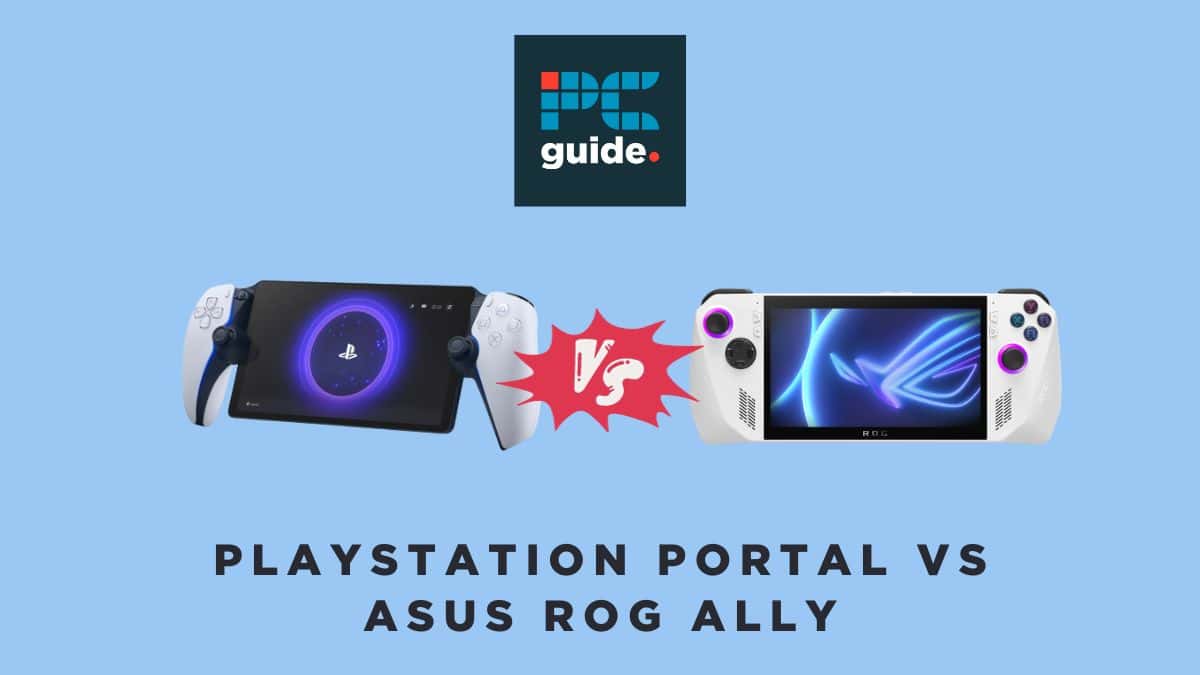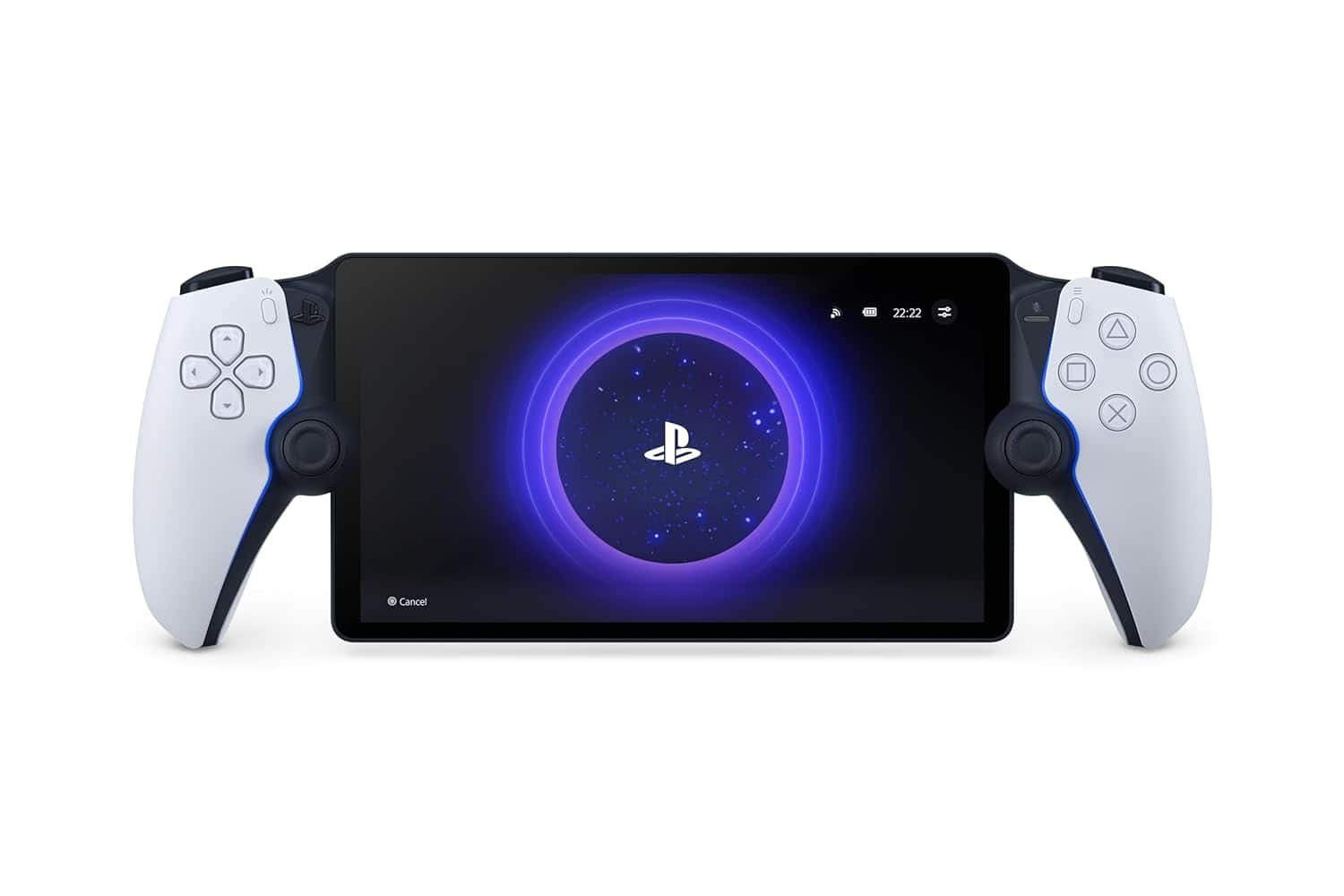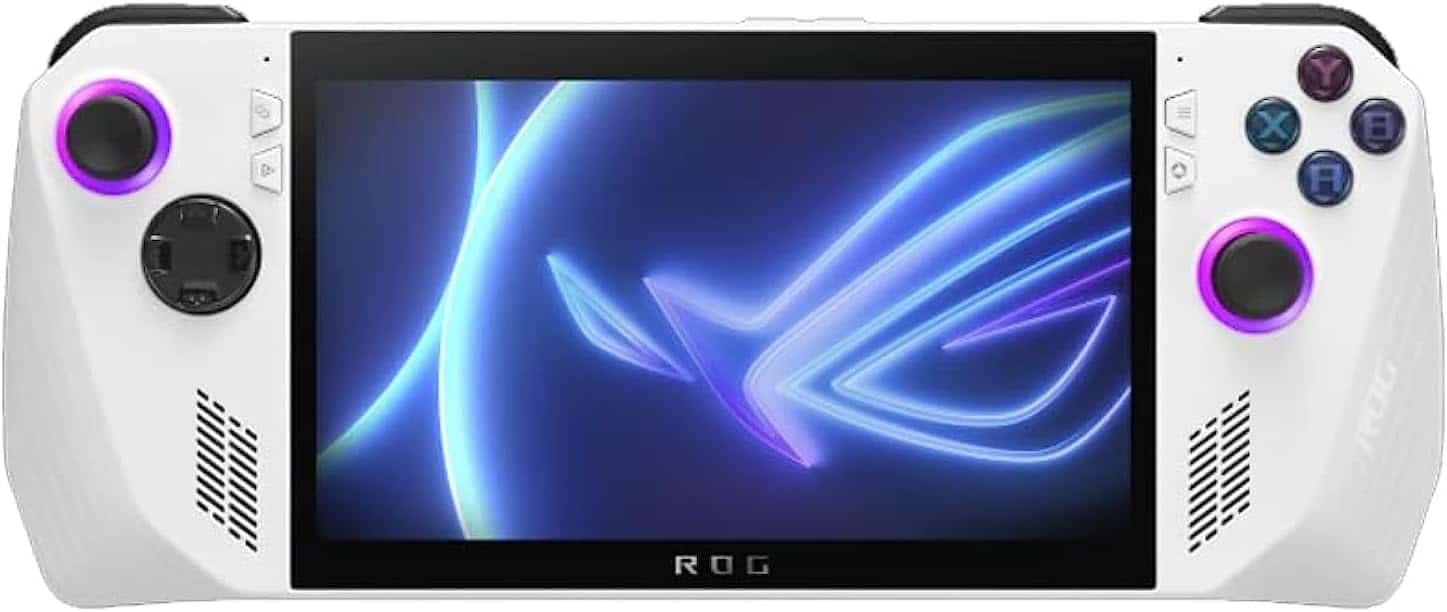PlayStation Portal vs ASUS ROG Ally – which is the game changer?

Table of Contents
Sony’s newest handheld competitor has captured the attention of PlayStation gamers, but how does it hold up against ASUS’s powerful portable gaming PC: let’s unpack the Sony PlayStation Portal vs ASUS ROG Ally. In the competitive realm of handheld consoles, two new devices from this year have emerged as front-runners – the PS Portal and the ASUS ROG Ally. Each device has a slightly different approach to handheld gaming, but are both at the forefront of the field in terms of innovation and design.
With unique features that cater to contrasting gaming preferences and needs, choosing between the two can be tricky for gamers who dabble in the worlds of PS5 and PC gaming. In this article, we will delve into a detailed comparison of these two handheld gaming devices, exploring their operating systems, processors, displays, controls, connectivity, and battery life. By the end, you’ll have a clear understanding of which device is better suited to your gaming desires.
PlayStation Portal vs ASUS Rog Ally specs
| Specifications | PlayStation Portal | ASUS Rog Ally |
|---|---|---|
| Display and refresh rate | 8-inch LCD 1080p, 60Hz | 7-inch FHD (1920 x 1080) 16:9 IPS-level, 120Hz |
| Operating system | Custom OS for PS5 Integration | Windows 11 Home |
| Controls | DualSense Controller | Gamepad controls, 2 x full-size analog sticks, HD haptics, 6-axis IMU |
| Processor | Custom Processor for PS5 Games | AMD Ryzen™ Z1 Extreme Processor (8-core/16-threads, up to 5.10 GHz boost) |
| Connectivity | Wi-Fi | Wi-Fi 6E, USB 3.2 Gen2, DisplayPort 1.4, microSD (UHS-II), Bluetooth 5.2 |
| Battery | Up to 8 hours | 40WHrs, 4S1P, 4-cell Li-ion |
PS Portal vs ASUS Rog Ally features
Let's dive into a comparison of the features of the PlayStation Portal and ASUS Rog Ally.
Display
When it comes to the display, the PlayStation Portal Remote Player features an 8-inch LCD screen with a display resolution of 1080p and a 60Hz fps refresh rate. While the graphics are vibrant and offer a decent viewing experience, it falls short compared to the ASUS ROG Ally.
While slightly smaller, the ROG Ally sports a 7-inch FHD (1920 x 1080) but has the better specs of a 16:9 IPS-level display with a 120Hz refresh rate, Gorilla Glass Victus™ protection, and a brightness level of 500nits. This combination ensures a visually stunning gaming experience with smooth and crisp visuals.
Operating System
The PlayStation Portal runs on a custom operating system designed specifically for seamless integration with the PS5. This ensures a smooth and immersive gaming experience for PlayStation enthusiasts on the go. However, it is worth noting that this exclusive OS and PlayStation Link compatibility does mean that you can’t download any apps onto your PS Portal. Its fundamental purpose is to stream games from your PS5 – it might do this well, but it is all that it can do.
On the other hand, the handheld gaming PC, the ASUS ROG Ally, operates on Windows 11 Home, a desktop OS. This provided a more versatile gaming experience with compatibility across various gaming platforms like Steam, Xbox Game Pass, and the Epic Games Store. It also demonstrates the flexible functionality of the ROG Ally – you can connect it to your monitor or TV to enjoy multimedia content on a bigger scale.
Processor
The PlayStation Portal Remote Player boasts a custom processor optimized for PS5 games, delivering impressive performance and ensuring compatibility with the latest PS5 AAA games. On the contrary, the ROG Ally is equipped with the powerful AMD Ryzen™ Z1 Extreme Processor, a custom APU that leverages Zen 4 CPU cores and RDNA 3 GPU cores. Its 8 cores and 16 threads leave it capable of boosting up to 5.10 GHz. This processor provides a high level of performance, enabling smooth gameplay and multitasking.
This is where the disparities between the two really come to light. With its powerful processing, the ROG Ally downloads and runs games directly from the device. Naturally, it means that the ROG Ally also has a lot more internal storage space and RAM. This is the most common functioning of a handheld, and is the biggest difference of the Portal – it can’t run games natively. The hardware specs on the Portal may seem light compared to the ROG Ally, but this is because it relies on the PS5 to do the heavy lifting, and games are merely streamed from the PS5 console onto the Portal via a WiFi connection. We’ve also weighed in on how the PS Portal holds up against other popular handhelds, such as Valve’s Steam Deck, to gauge where it might fit into the scene.
What’s the best processor for a handheld gaming console?
AMD is one of the leading brands for PC hardware and CPUs, and its mobile processors are no exception. Launched in May of 2023, the Ryzen Z1 could be seen as one of the most powerful processors for a handheld gaming console. It features “Zen4” architecture with 4nm process, 6-core /12-threads, 22MB total cache, and up to 4.90 Ghz boost speeds.
Controls
The PlayStation Portal provides a premium DualSense controller experience, allowing gamers to enjoy the same level of control and immersion as they would on the PS5. With gamepad controls, two full-size analog sticks, HD haptics, and a 6-axis IMU, players have precise control over their gaming experience.
On the other hand, the ROG Ally offers a more traditional handheld gaming experience with gamepad controls and a layout similar to that of a gaming controller. Featuring two analog sticks, a gamepad, and four buttons, the ROG Ally also has tasteful RGB lighting more traditional for a gaming device.
Connectivity
Both devices offer various connectivity options to enhance the gaming experience. The PlayStation Portal Remote Player features Wi-Fi and a 3.5mm audio jack for seamless online gaming and audio connectivity, but can only connect wirelessly to audio devices that also share its PlayStation Link technology. So far, this includes the Sony Pulse Explore Earbuds, and the Pulse Elite Headset.
On the other hand, the ROG Ally takes connectivity to the next level with Wi-Fi 6E, USB 3.2 Gen2, DisplayPort 1.4, microSD (UHS-II), and Bluetooth 5.2. These connectivity options ensure a versatile and adaptable gaming experience, allowing gamers to connect to a wide range of devices and accessories, giving it the edge in the PlayStation Portal vs ASUS ROG Ally debacle.
Battery Life
The battery life of handheld gaming devices is a crucial factor, especially for gamers who are always on the move. The exact battery life for the PlayStation Portal isn’t actually listed on the official website, but various sources from across the web mark the figures as between four and ten hours. The nature of the Portal as a streaming-only device comes in handy when it comes to extending its battery life.
The ROG Ally, on the other hand, boasts a 40WHrs, 4S1P, 4-cell Li-ion battery, providing a decent amount of playtime on a single charge. While the exact duration may vary depending on usage and settings, the ROG Ally is designed to last for extended gaming sessions of up to 8 hours, depending on your settings.
PS Portal vs ASUS Rog Ally price
The PlayStation Portal Remote Player is priced at $199.99, making it an attractive option for budget-conscious PlayStation enthusiasts. However, this of course has to be purchased on top of an investment in a PS5 console itself. On the other hand, the ROG Ally is priced between $599 and $799, positioning it as a premium device with high-end features and performance.
Is the PlayStation Portal better than the ASUS Rog Ally?
The PS Portal vs ASUS ROG Ally conundrum probably won’t be experienced by many, but after reading this article you hopefully now have a clearer idea of what separates the two devices, and which one might be the better investment for you. The PlayStation Portal offers seamless PS5 gaming that you can take with you away from your TV, while the ROG Ally provides a versatile PC gaming experience in the form of a handheld console. The choice between these devices comes down to individual gaming preferences, budget, and desired features, and ultimately to whether you’re more of a PlayStation or a PC gamer.


